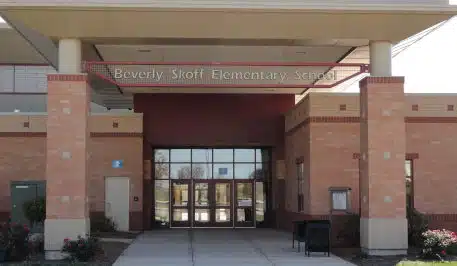Beverly Skoff Elementary: Focusing on Belonging, Significance, and Fun

Location: Bolingbrook, IL
Type of school: Public elementary school
Grade levels: K–5
Number of students: 730
A Responsive Classroom school since: 2018
In the summer of 2018, Beverly Skoff Elementary made two big changes to their approach to teaching: they enrolled their staff in the Responsive Classroom Elementary Core Course, and they hired a learning environment coordinator.
The learning environment coordinator supports everyone in the learning community—leadership, teachers, students, and parents—but, according to Beverly Skoff’s learning environment coordinator, Danielle Deddo, her “main priority is always the kids: making sure they feel safe and welcome and have fun.” This purpose aligns precisely with Responsive Classroom’s emphasis on creating a positive community in which students experience a sense of belonging, significance, and fun. Here are some of the ways Deddo uses the Responsive Classroom approach to support her work as a learning environment coordinator.
Self-Regulation and Social Skills
To support students in developing self-regulation skills, each classroom in Beverly Skoff has a designated spot where students can take a break or calm themselves down (similar to a Responsive Classroom positive time-out space). Early in the year, teachers use Interactive Modeling to show students how to appropriately use these spaces. Students who need extra support working on these skills head to Deddo’s calming room. This room is full of a variety of developmentally appropriate self-calming tools, from tactile supports like a Zen garden and coloring books to self-directed activities like breathing exercises.
Community Building
In her calming room, Deddo supervises different groups of students. She plays team-building games with students who need extra practice with social skills, works on calming strategies with students who need support managing their anxiety, and plays active and interactive games with students who need extra movement breaks beyond their class’s energizers or brain breaks. For students who are struggling to feel like they belong, she finds opportunities to pair them up with another student, sometimes through a cross-age peer mentorship program.
Routines and Procedures
Deddo also supports students in learning and following the school’s procedures and routines, especially at lunch and recess. These procedures and routines include colored cones that correspond to specific classrooms which students line up in front of at the beginning and end of lunch and recess. The recess routine also involves a red line students know they need to cross before they can start running around, ensuring that students walk respectfully through the school on their way to play. At the beginning of each school week, the lunch and recess teachers also lead a chant with students to remind them of the expectations: “We work as a team. We follow directions. We are safe. We are responsible.” Proactively teaching these routines and procedures early in the year through Interactive Modeling sets students up for success by creating an environment where students feel a sense of safety and predictability.
Morning Meeting
When Beverly Skoff initially adopted the Responsive Classroom approach, one of the first things school leaders did was schedule twenty-five minutes at the beginning of the day for Morning Meeting. This was based on the belief that, as Deddo explains, “If [students] can come in and transition into and out of our building calmly, that sets the stage” for students to be successful in the rest of their school day. For those twenty-five minutes, “There’s nothing going on in the building but joy and fun and connectivity.” The school also has support staff—including the librarian, the art teacher, the PE teacher, speech pathologists, and Deddo—join a classroom each morning for Morning Meeting. Support staff rotate the classroom they are going to each quarter, and if Deddo or school leaders notice an opportunity to strengthen a teacher-student relationship that could benefit from sharing Morning Meeting together, they make sure that staff member gets placed in that classroom.
Intrinsic Motivation
Before adopting the Responsive Classroom approach in 2018, Beverly Skoff used a token economy that relied on flip charts. Now, all the Responsive Classroom strategies Beverly Skoff implements share a common purpose of promoting intrinsic motivation in students. One way Deddo reinforces this work in her role as learning environment coordinator is with positive teacher language. For example, when she goes for a walk with a student who is struggling to calm down, she asks questions such as, “How does your body feel?” and “What do you need right now?” These questions encourage the student to get in touch with what they are feeling and assess their own needs as a learner; the relationship they have built with Deddo and other adults at the school creates an environment where they feel safe answering the questions honestly. As Deddo describes it, students’ mindset is: “It’s okay to make mistakes. We’re still a community.”
Results
Beverly Skoff Elementary collects Panorama data on students’ social-emotional skills twice a year—once in the spring and once in the fall. The most recent data indicates a clear increase in students’ sense of belonging. Additionally, Deddo has noticed a change in her students: “Five years ago, we didn’t see kids going to a take-a-break spot or calm corner and using their bodies to calm down.” Now she regularly observes students “using their bodies to help them regulate and get back [to learning] as soon as they feel they’re ready to join back in.”
